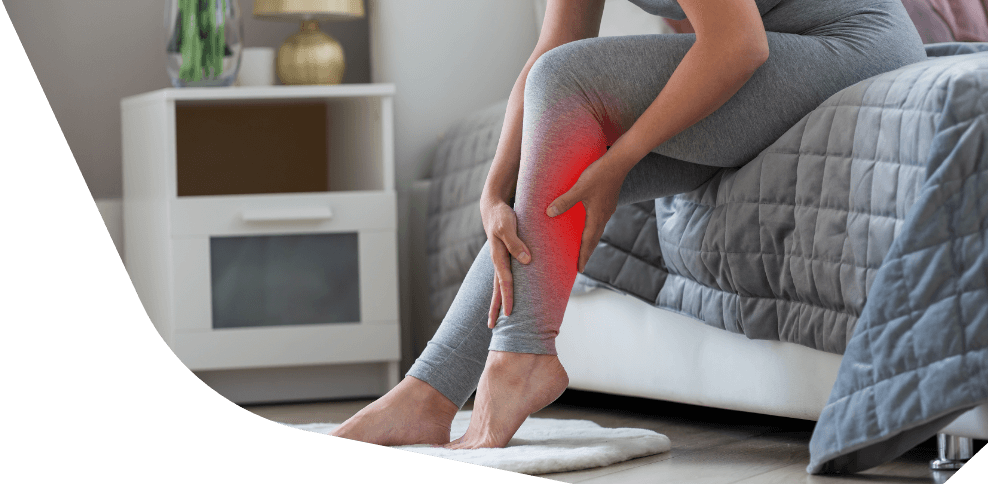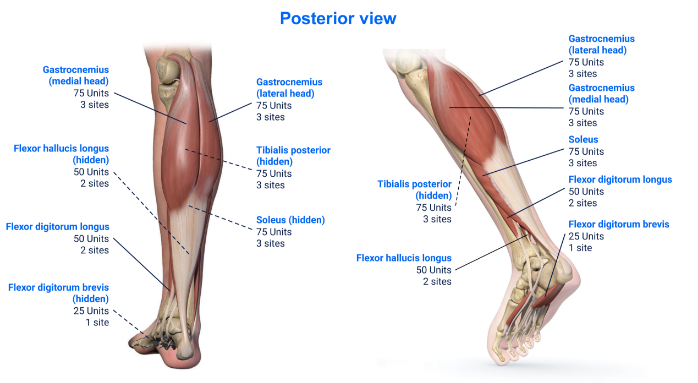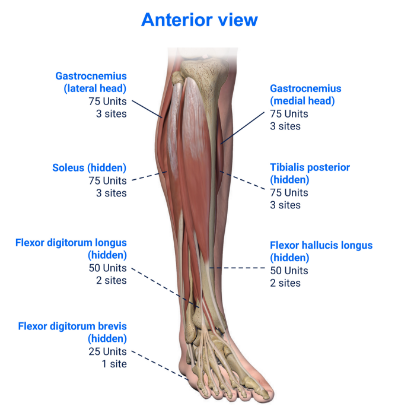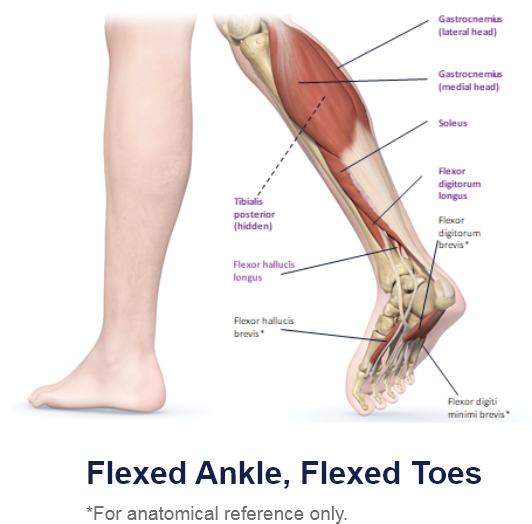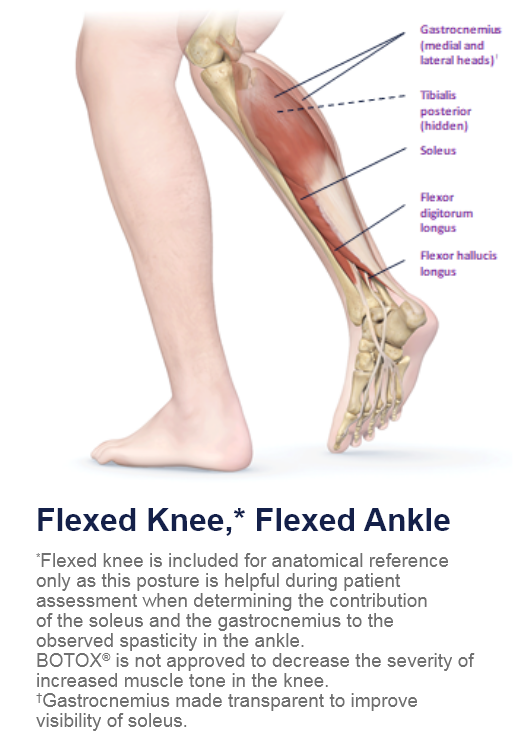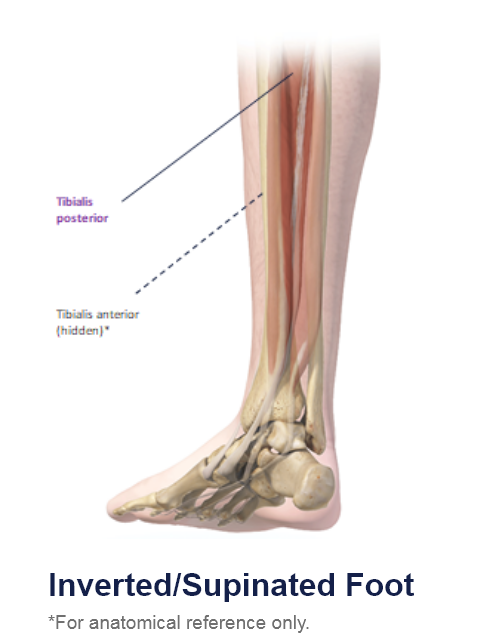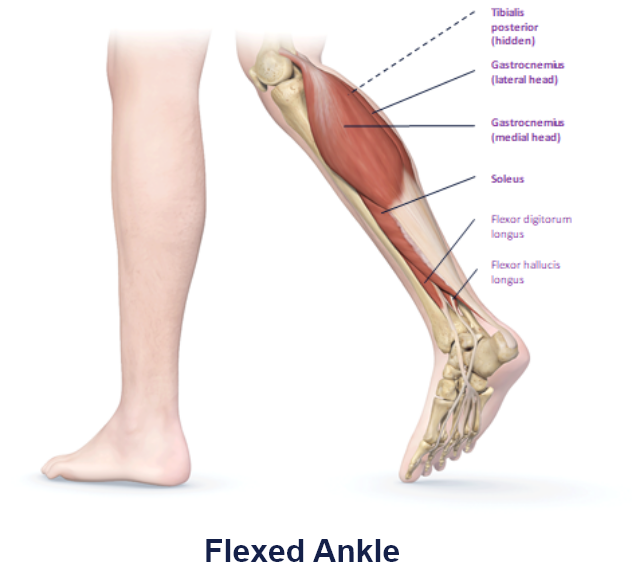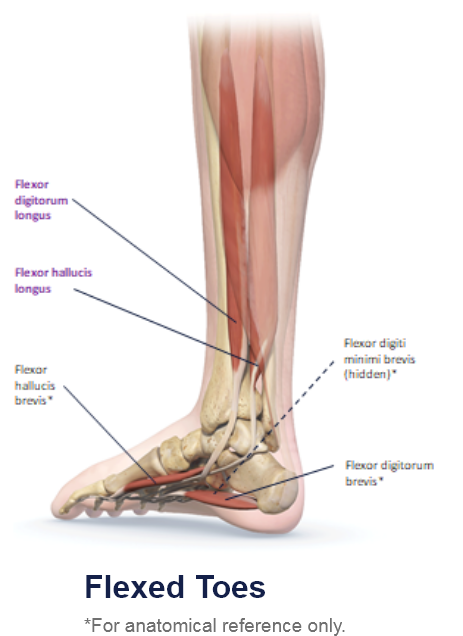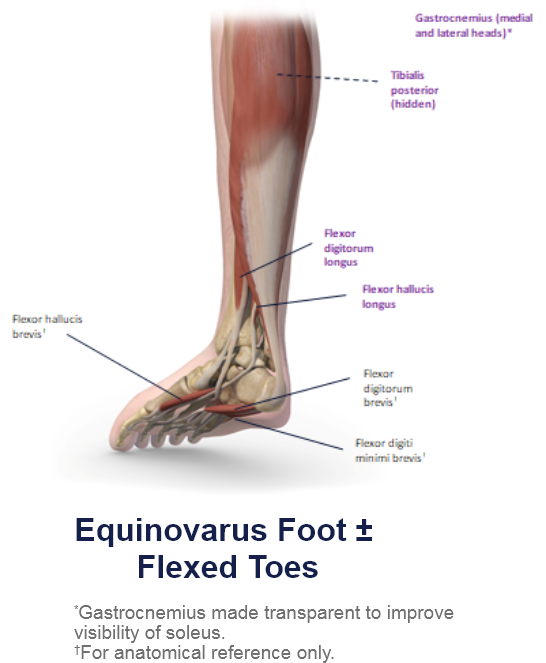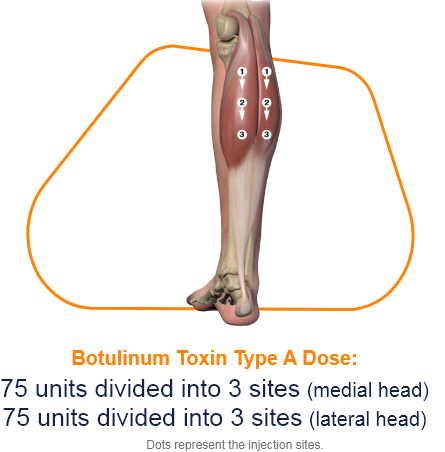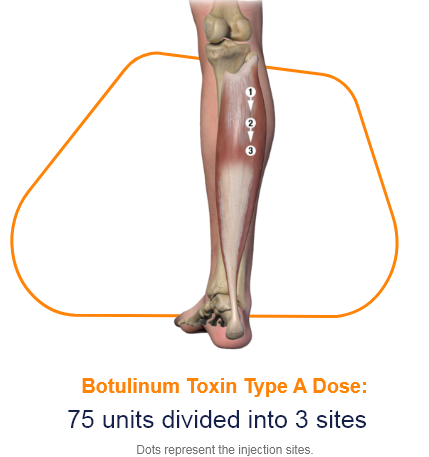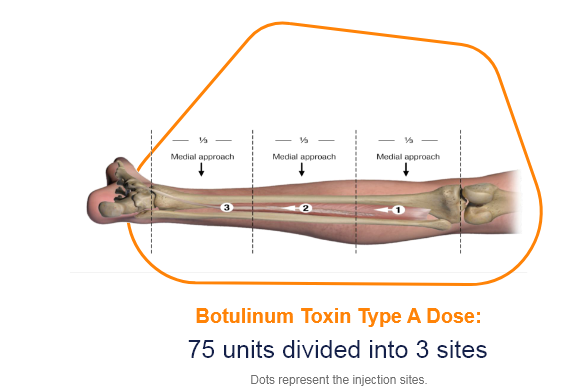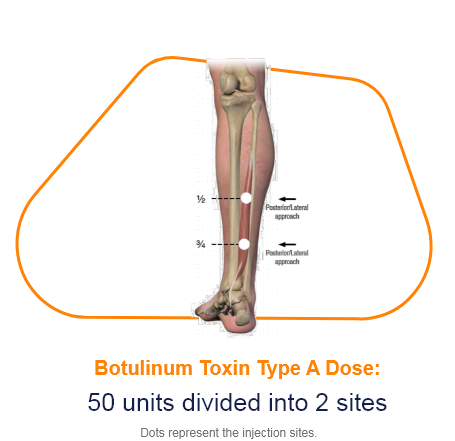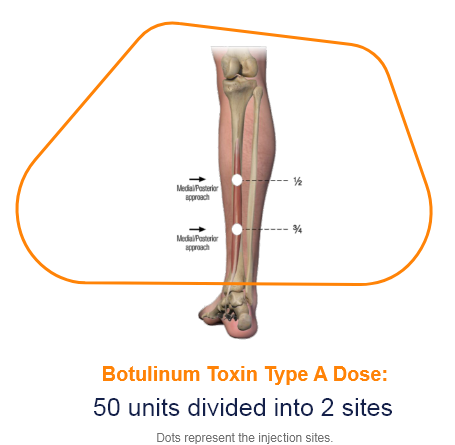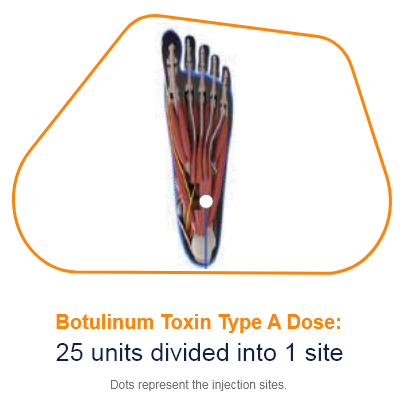Clinical Presentation Pattern and Associated Muscles
Injection Sites
Patterns and Clinical Presentations
The gastrocnemius muscle is one of the calf muscles (triceps surae) in the superficial posterior compartment of the leg, which sits superficial to the much larger soleus muscle. It gives the calf its distinctive twoheaded appearance and is a primary plantar flexor.
Its medial border of the lateral head and its lateral border of the medial head forms the inferolateral and inferomedial borders of the popliteal fossa respectively.1
• Function: Plantar flexes the foot and flexes the knee.1
• Origin:
Medial Head: Posterior non-articular surface of the medial femoral condyle.1
Lateral Head: Posterior non-articular surface of the lateral femoral condyle.1
• Insertion: Calcaneal (Achilles) tendon into mid-posterior calcaneus.1
• Innervation: Tibial nerve.2
.
Muscle Function Animation
.
.
Cadaver Demonstration
.
The soleus muscle is one of the calf muscles (triceps surae) in the superficial posterior compartment of the leg, which sits deep to the gastrocnemius. It is much bigger than gastrocnemius and is the primary plantar flexor.3
• Function: Plantar flexion.3
• Origin:
Fibular Origin: Head of the fibula and upper third of posterior fibula.
Tibial Origin: The medial border of the tibia and posterior border of the tibia (soleal line)
fibers also arise from "U" shaped tendinous arch that spans between the tibia and fibula.
• Insertion: Tendon calcaneus (Achilles tendon) into mid posterior calcaneus.3
• Innervation: Tibial nerve (sciatic nerve roots L5 to S2).3
.
Muscle Function Animation
.
.
Cadaver Demonstration
.
The tibialis posterior muscle is the deepest muscle of the deep posterior compartment of the lower leg. Its long muscle belly arises from the posterior aspect of the interosseous membrane and superior two-thirds of the posterior and medial surface of the fibula, and the superior aspect of the proximal tibia. The TPM tendon inserts distally onto many attachment points on the plantar surface of the foot.4
• Function: Plantarflexion and inversion of the foot.5
• Origin: Upper half of posterior shaft of tibia and upper half of fibula between medial crest and interosseous border, and adjacent interosseous membrane.5
• Insertion: Navicular and medial cuneiform.5
• Innervation: Tibial nerve.5
.
Muscle Function Animation
.
.
Cadaver Demonstration
.
The flexor hallucis longus muscle originates on the lateral side of the posterior compartment of the leg and inserts into the plantar surface of the great toe on the medial side of the foot. The muscle fibers of the flexor hallucis longus converge inferiorly to form a large cord-like tendon, which passes behind the distal head of the tibia and then slips into a distinct groove on the posterior surface of the adjacent tarsal bone (talus) of the foot.6
• Function: The primary action of the muscle is flexion of the great toe, but it may minimally supinate and plantarflex the ankle.2
• Origin: Originates from the inferior two-thirds of the posterior fibula.
• Insertion: The muscles insert on the plantar surface of the base of the distal phalanx of the great toe.2
• Innervation: Tibial nerve.2
.
Muscle Function Animation
.
.
Cadaver Demonstration
.
The flexor digitorum longus is part of the deep muscle group of the posterior compartment of the lower leg.7
• Function: Flexion of digits two through five; the muscle may aid in plantar flexion of the ankle.2
• Origin: Originates from the posterior surface of the tibia distal to the soleal line.2
• Insertion: The muscle continues distally to split into four individual tendons, which insert on the plantar surfaces of the bases of the second through fifth distal phalanges.2
• Innervation: Tibial nerve.2
.
Muscle Function Animation
.
.
Cadaver Demonstration
.
The flexor digitorum brevis (FDB) muscle lies immediately superior to the plantar aponeurosis and inferior to the tendons of the flexor digitorum longus in the sole of the foot.8
• Function: Flexes lateral four toes at proximal interphalangeal joint.8
• Origin: Medial process of calcaneal tuberosity and plantar aponeurosis.8
• Insertion: Sides of plantar surface of middle phalanges of 2nd - 5th digits.8
• Innervation: Medial plantar nerve from Tibial nerve.8
.
Muscle Function Animation
.
.
Cadaver Demonstration
.
References
1. Radiopaedia.org. (2022). Gastrocnemius muscle. Radiopaedia.org. Last Updated: 6 Feb 2022. Available at: https://radiopaedia.org/articles/gastrocnemius-muscle [Accessed 3 September 2023].
2. Card, R.K. and Bordoni, B., (2019). Anatomy, Bony Pelvis and Lower Limb, Foot Muscles.
3. Radiopaedia.org. (2021). Soleus muscle. Radiopaedia.org. Last Updated: 16 Nov 2021. Available at: https://radiopaedia.org/articles/soleus-muscle [Accessed 3 September 2023].
4. Corcoran, N.M. and Varacallo, M., (2021). Anatomy, Bony Pelvis and Lower Limb, Tibialis Posterior Muscle. In StatPearls. StatPearls Publishing.
5. Jones J, Al Kabbani A, Hacking C, et al. (2009). Tibialis posterior muscle. Radiopaedia. Last Updated: 1 August 2022. Available at: https://radiopaedia.org/articles/tibialis-posterior-muscle [Accessed 2 August 2023].
6. Mitchell, Adam & drake, & Vogl, A.. (2015). Gray's Anatomy for Students, 3rd Edition.
7. Mostafa, E., Graefe, S.B. and Varacallo, M. (2022). Anatomy, Bony Pelvis and Lower Limb, Leg Posterior Compartment. In StatPearls. StatPearls Publishing.
8. Radiopaedia.org. (2021). Flexor digitorum brevis muscle. Radiopaedia.org. Last Updated: 3 Aug 2021. Available at: https://radiopaedia.org/articles/flexor-digitorum-brevis-muscle [Accessed 3 September 2023].


